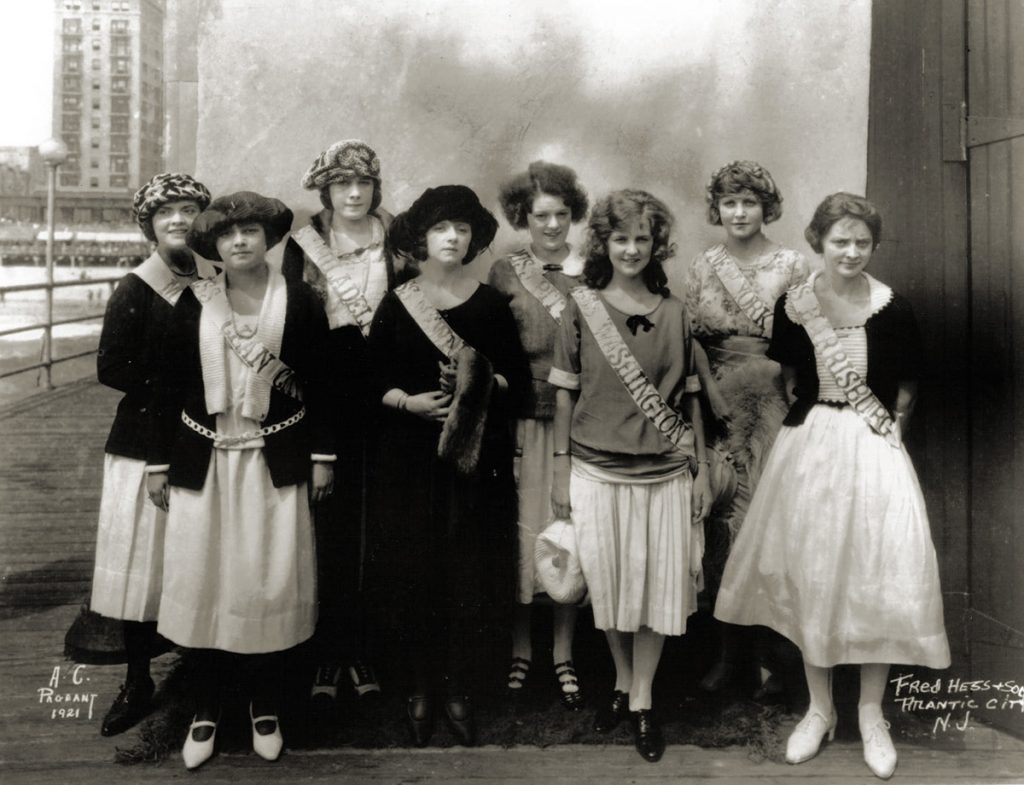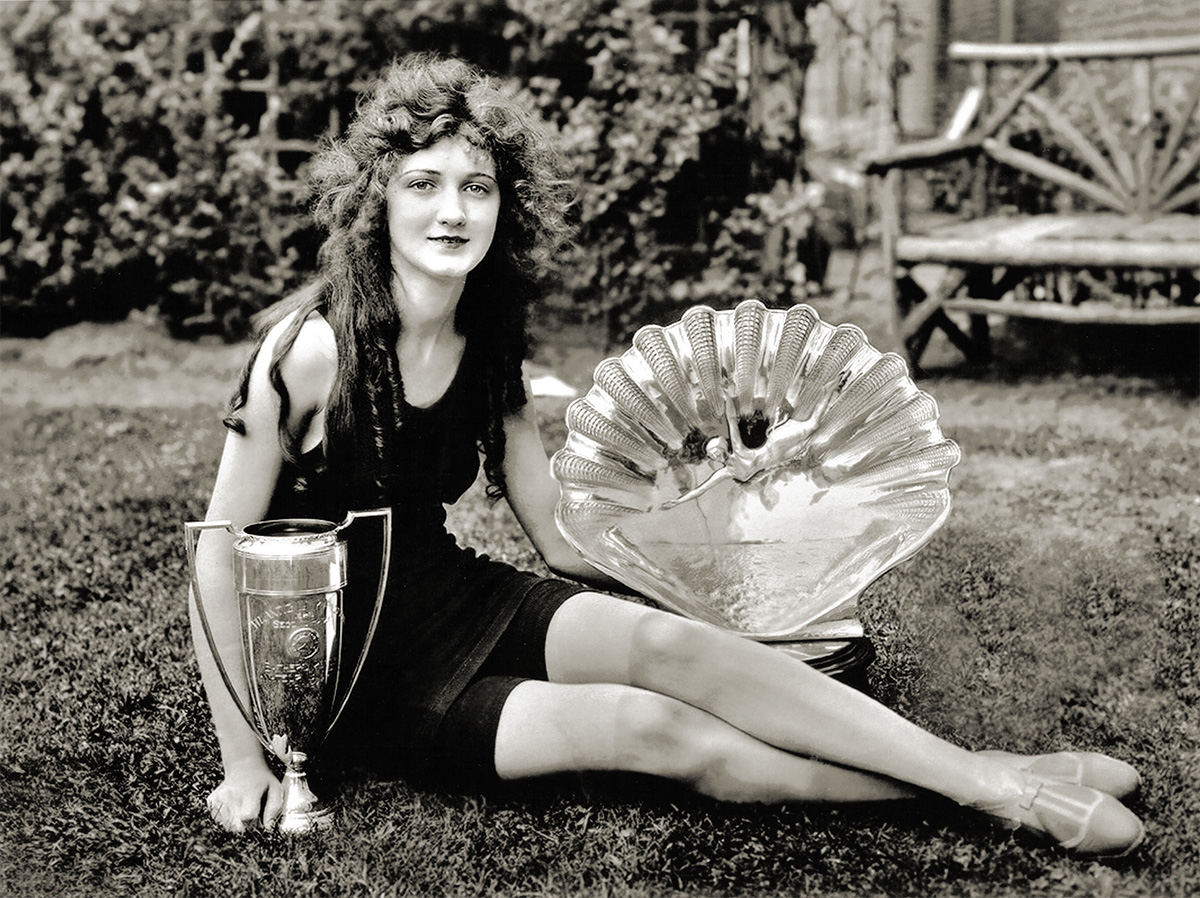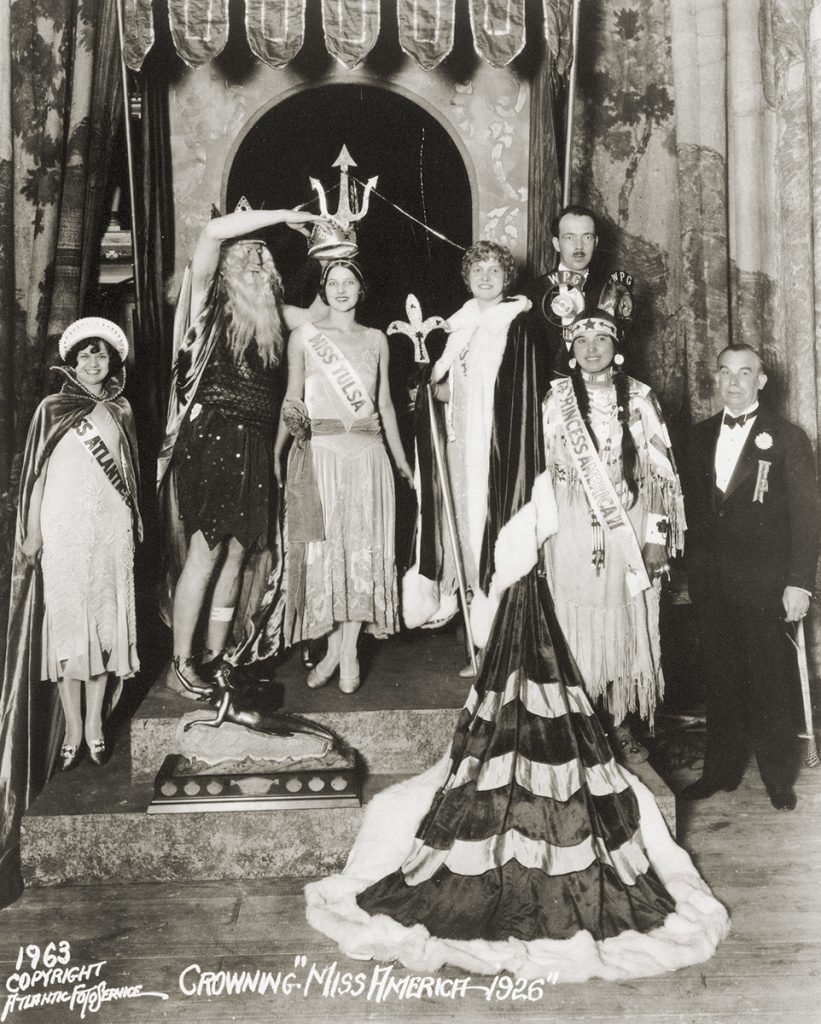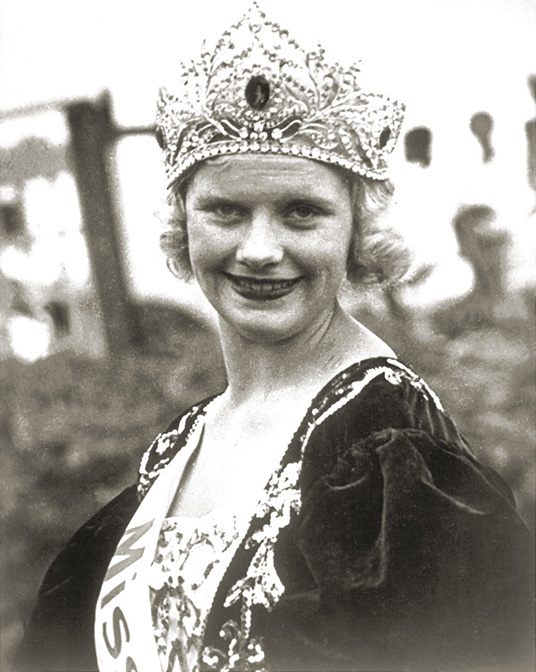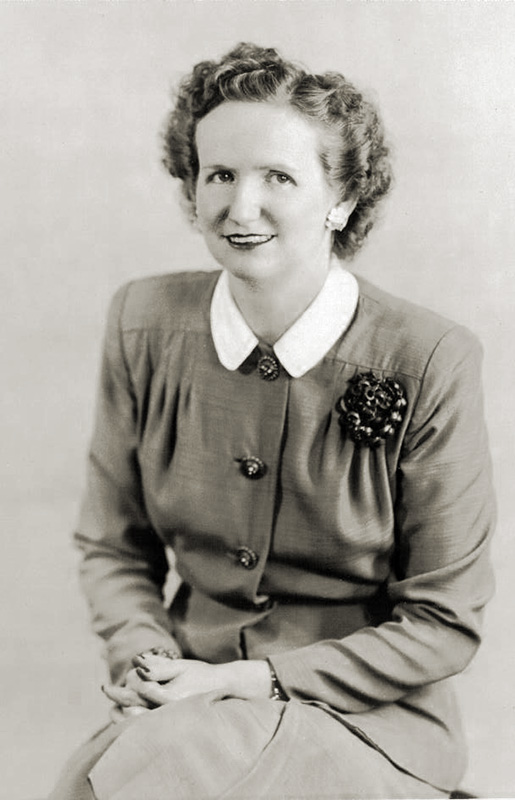Our History
Miss America: A History
In the summer of 1921, on the boardwalk of Atlantic City, an American icon was born.
For the past 100 years, Miss America has been one of the country’s most recognizable household names and has been at the center of everything from national trends to social movements to the birth of television. The young women involved have made a significant difference in people’s lives through their charitable and community service endeavors, using the national platform to educate millions of Americans on issues facing the nation.
Miss America is more than a title, it’s a movement of empowering young women everywhere to dream big, to insist that their voices be heard and to inspire change in the world around them.
Of course, Miss America wears a crown—she rules.
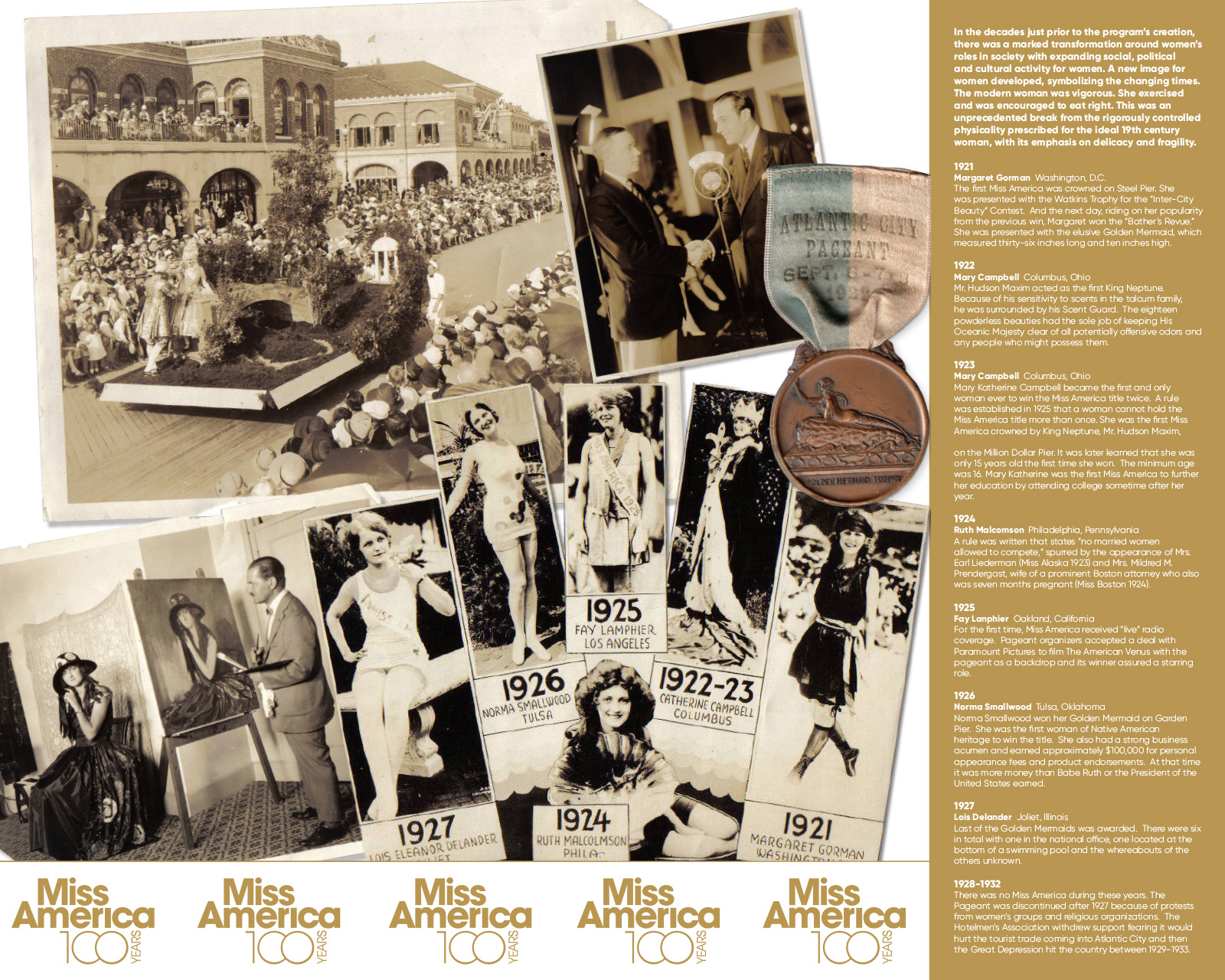
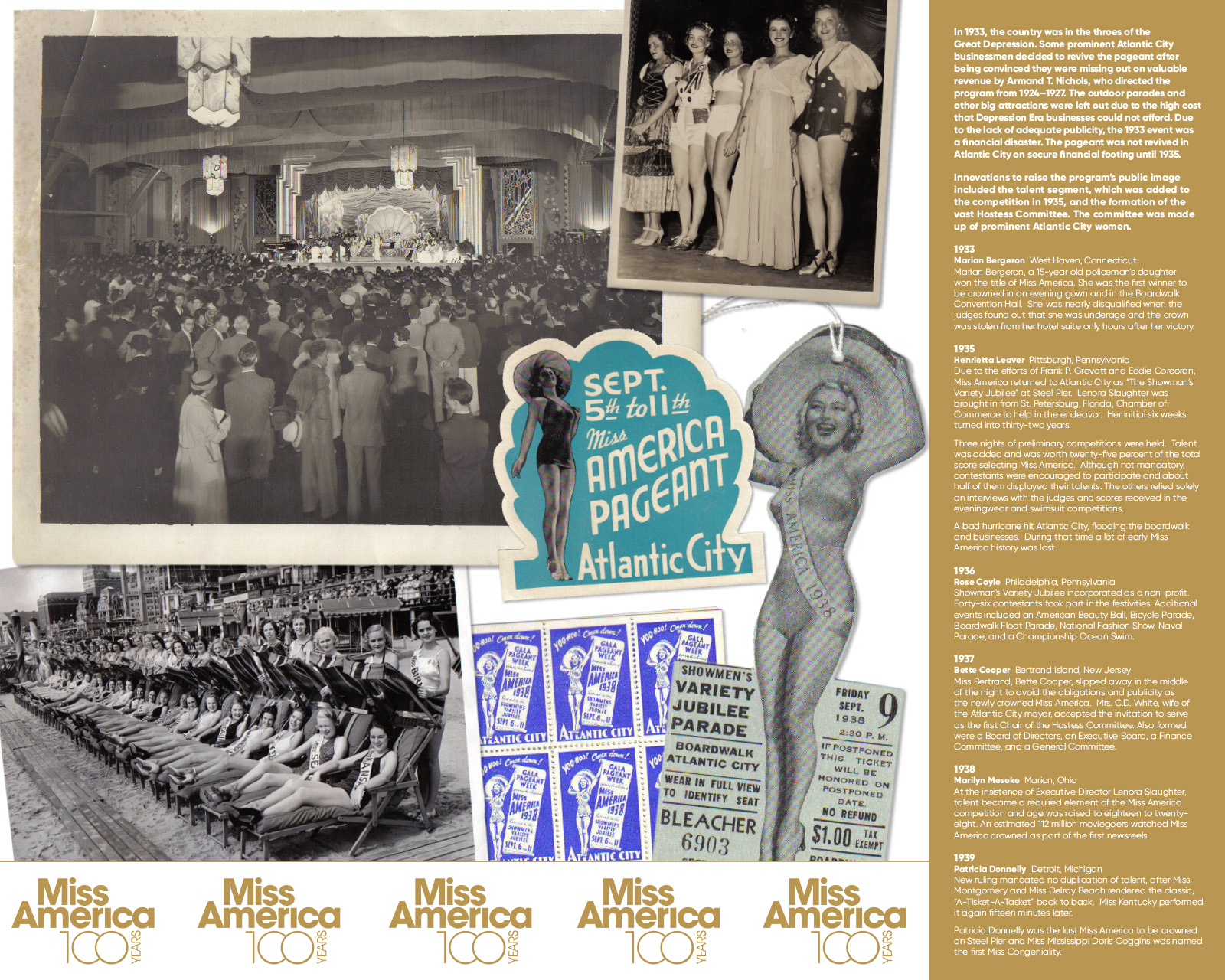
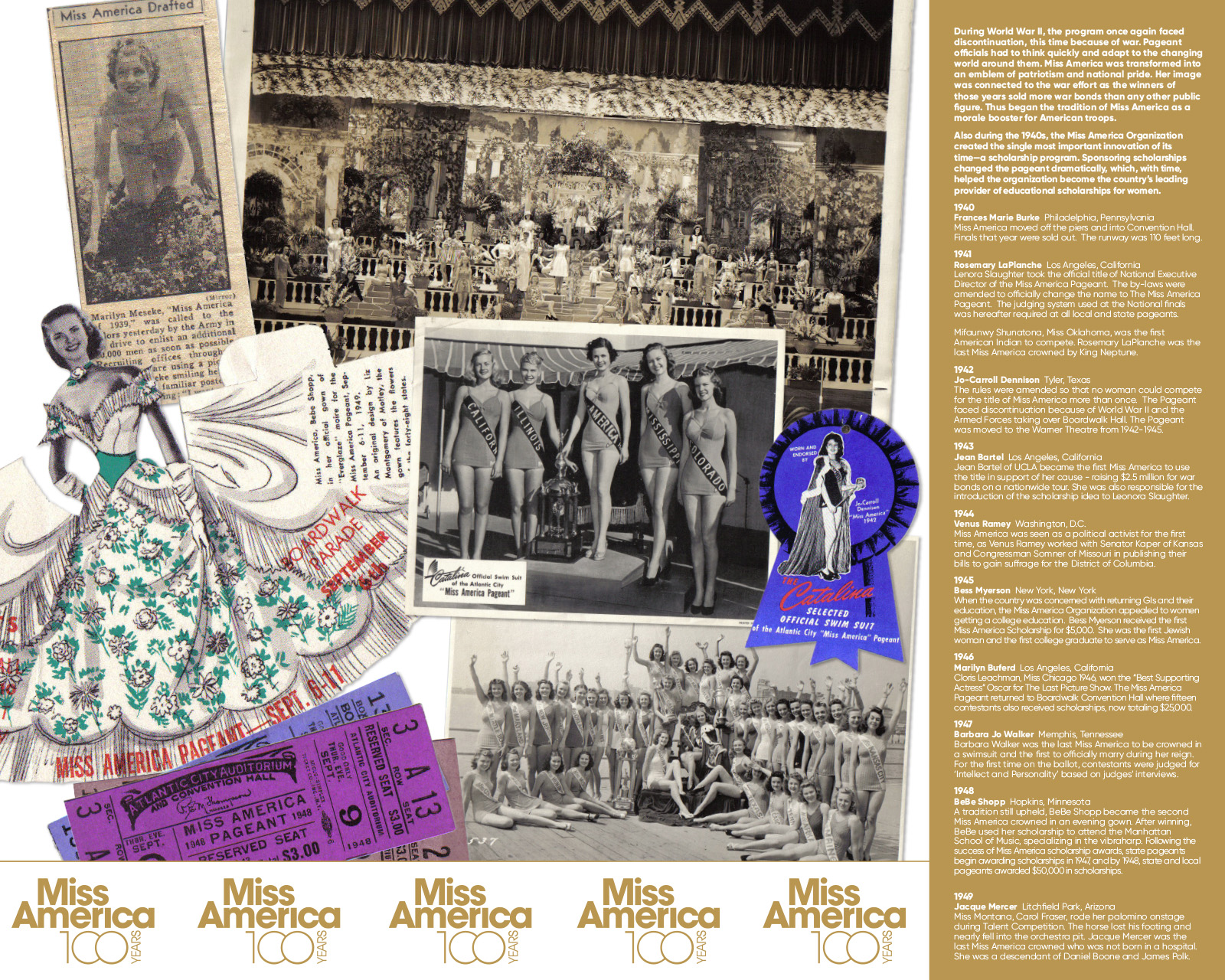
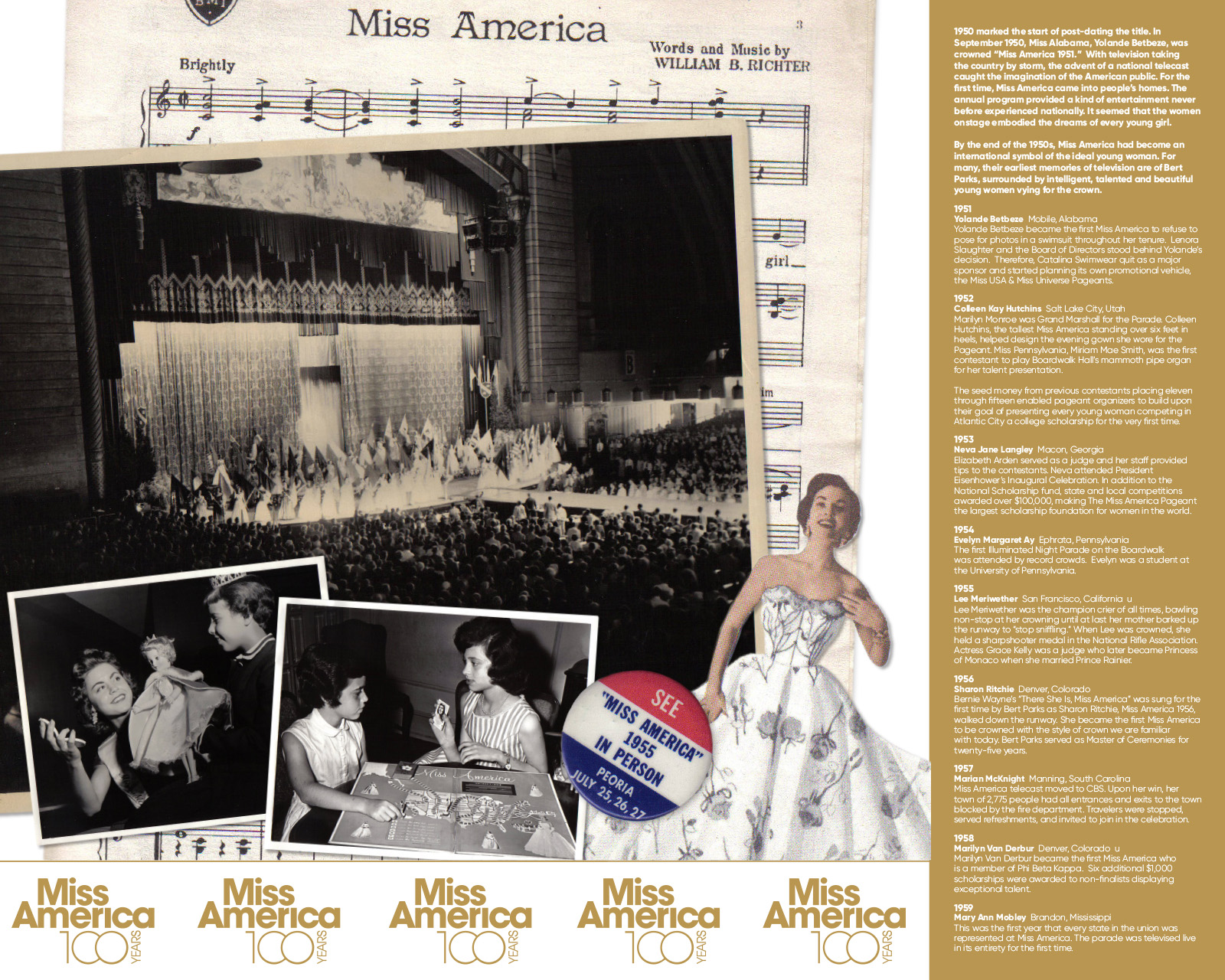
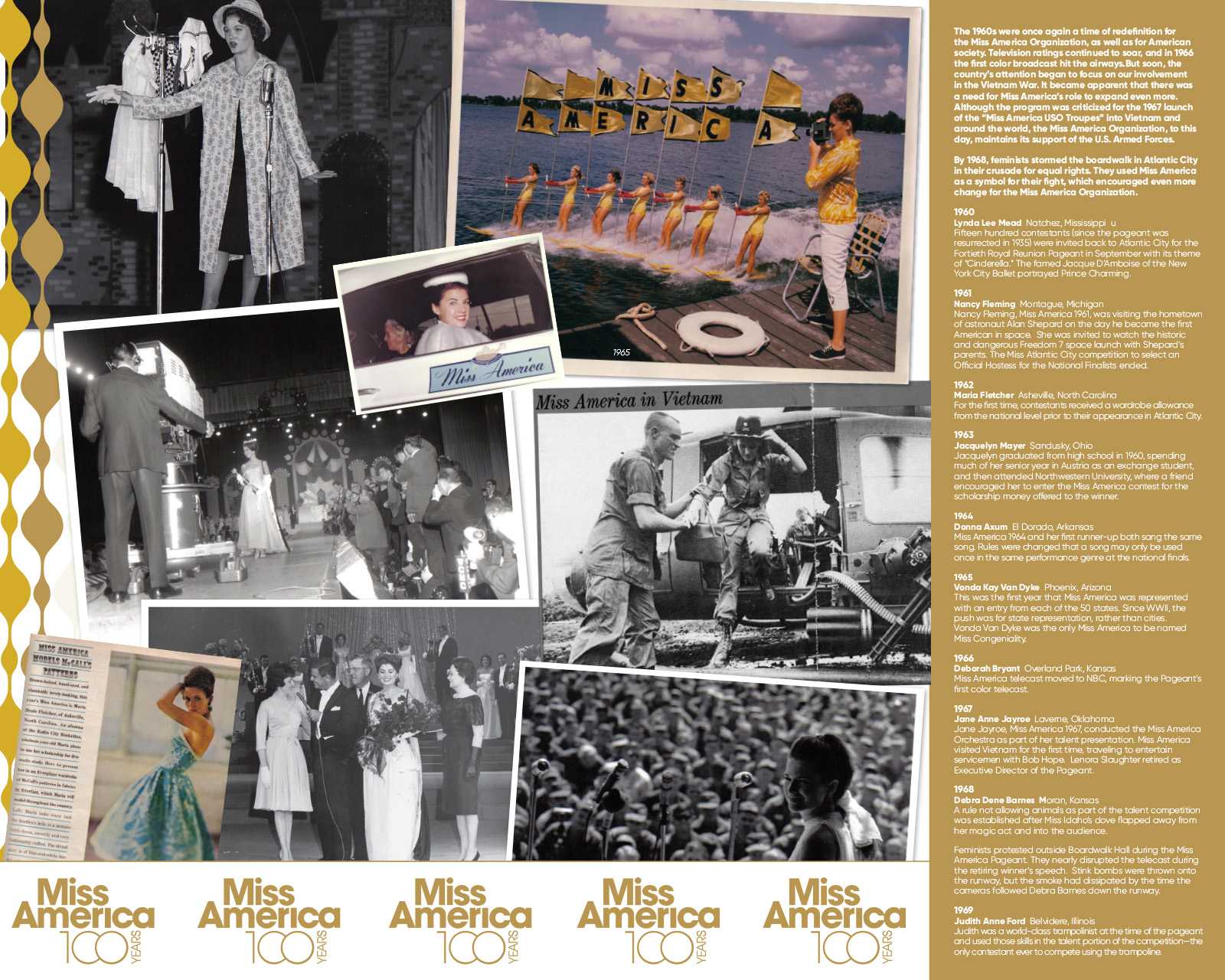
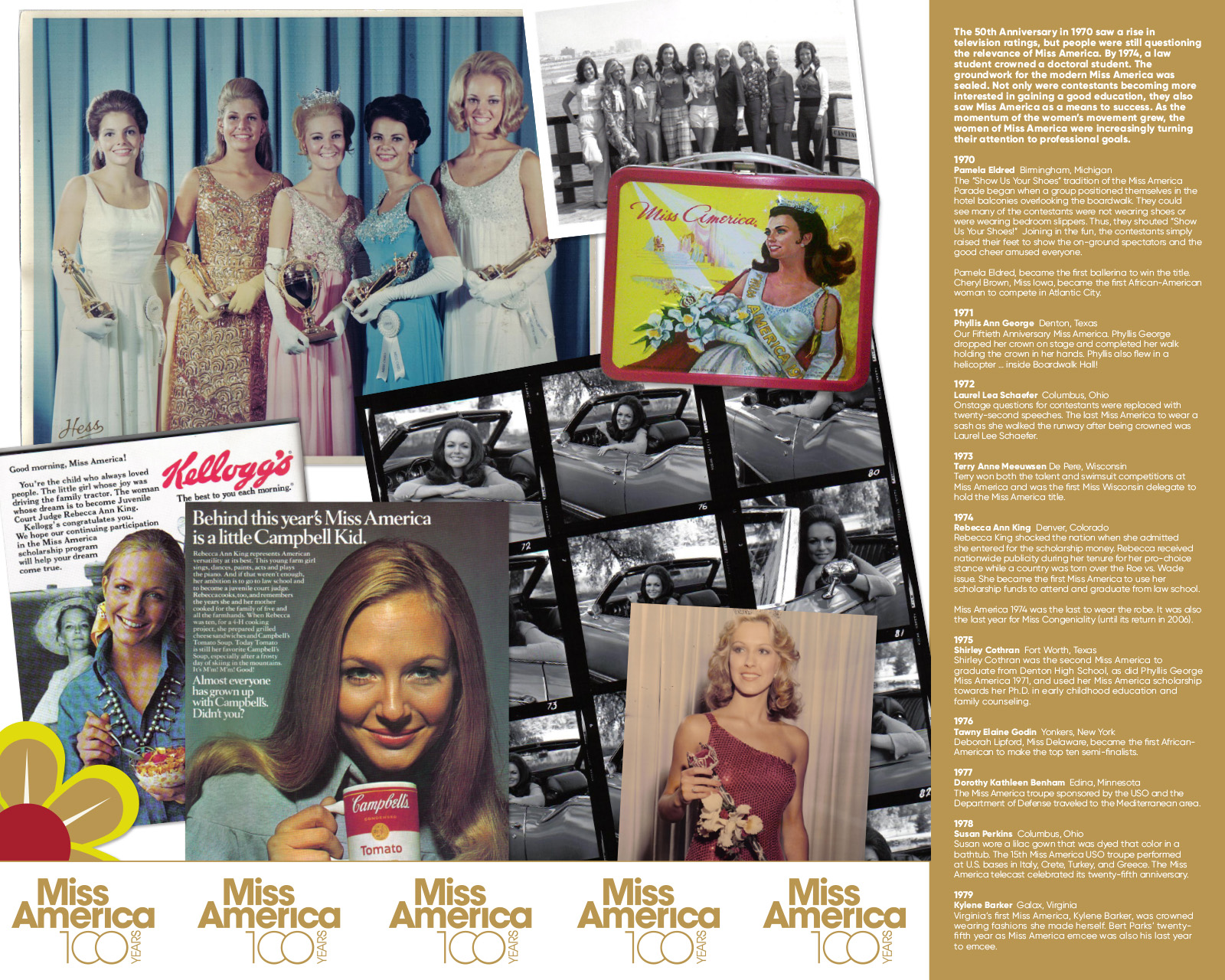
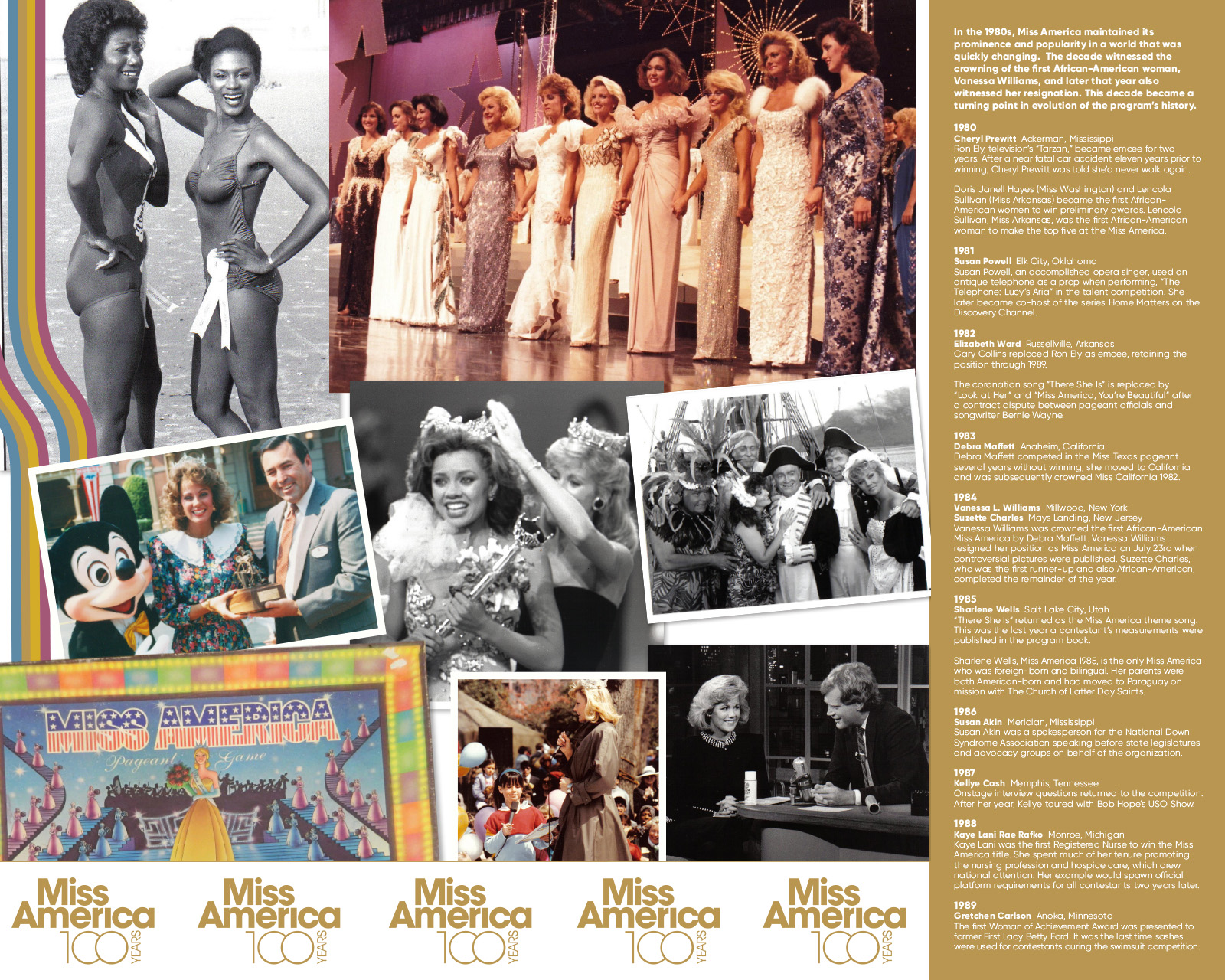
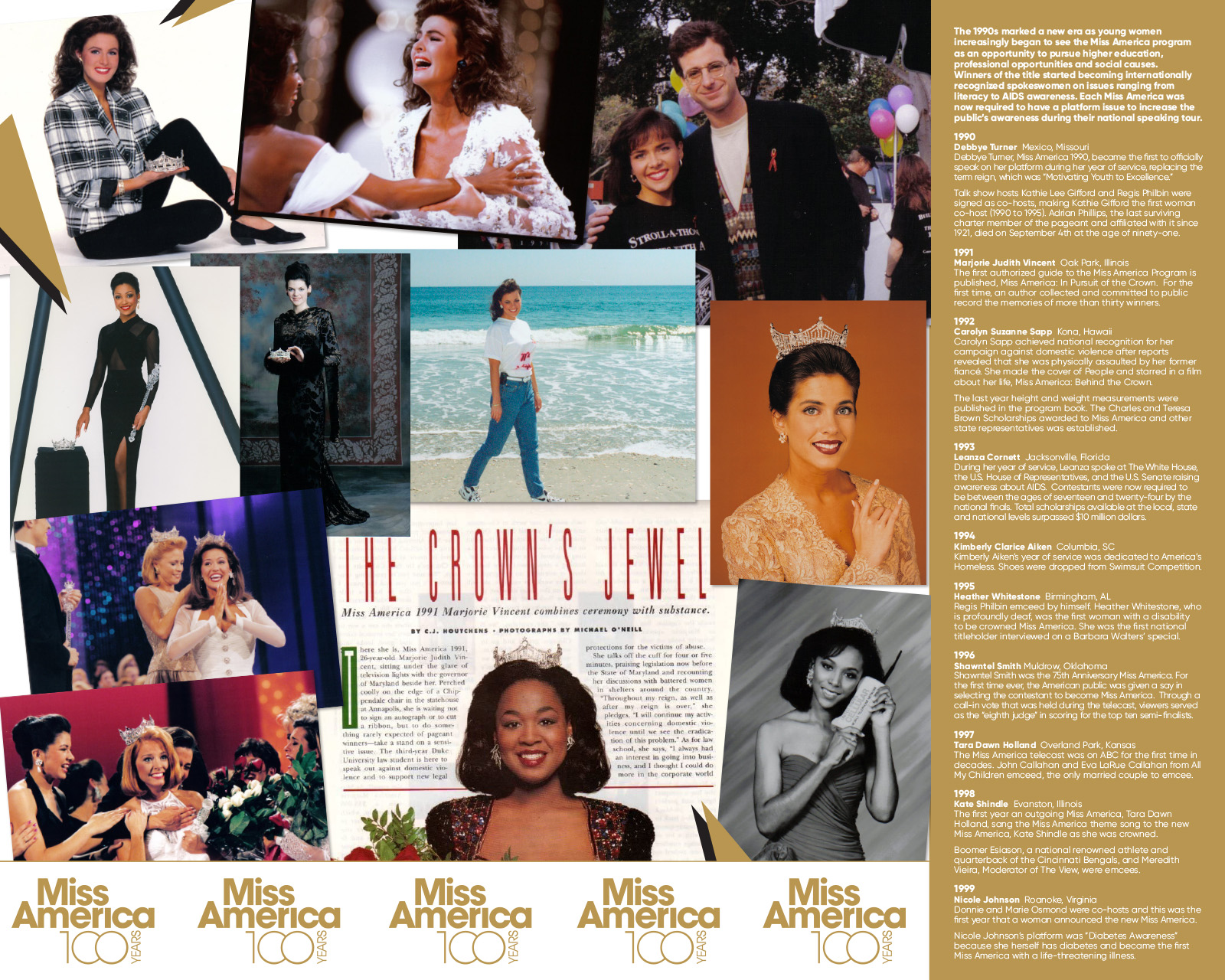
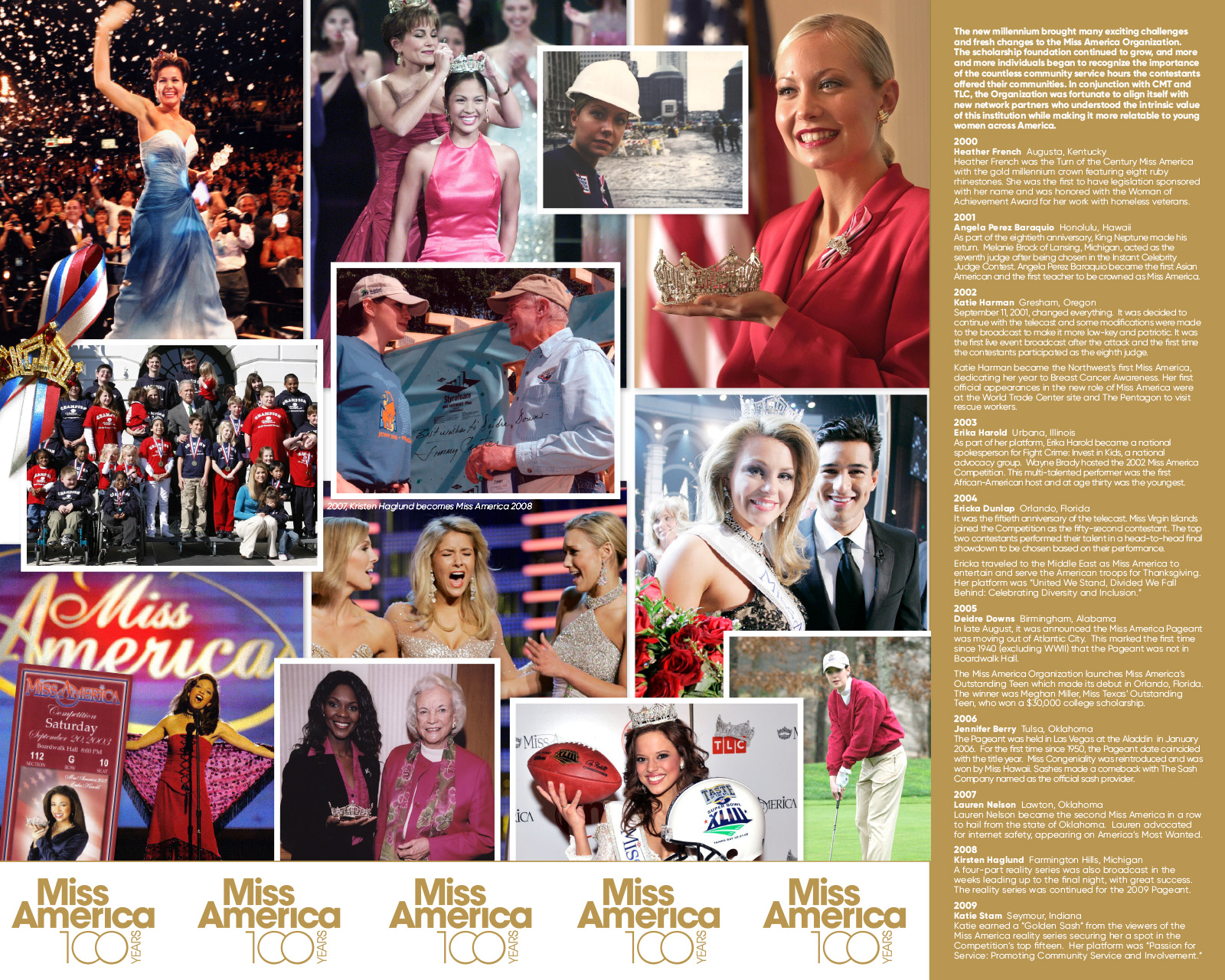
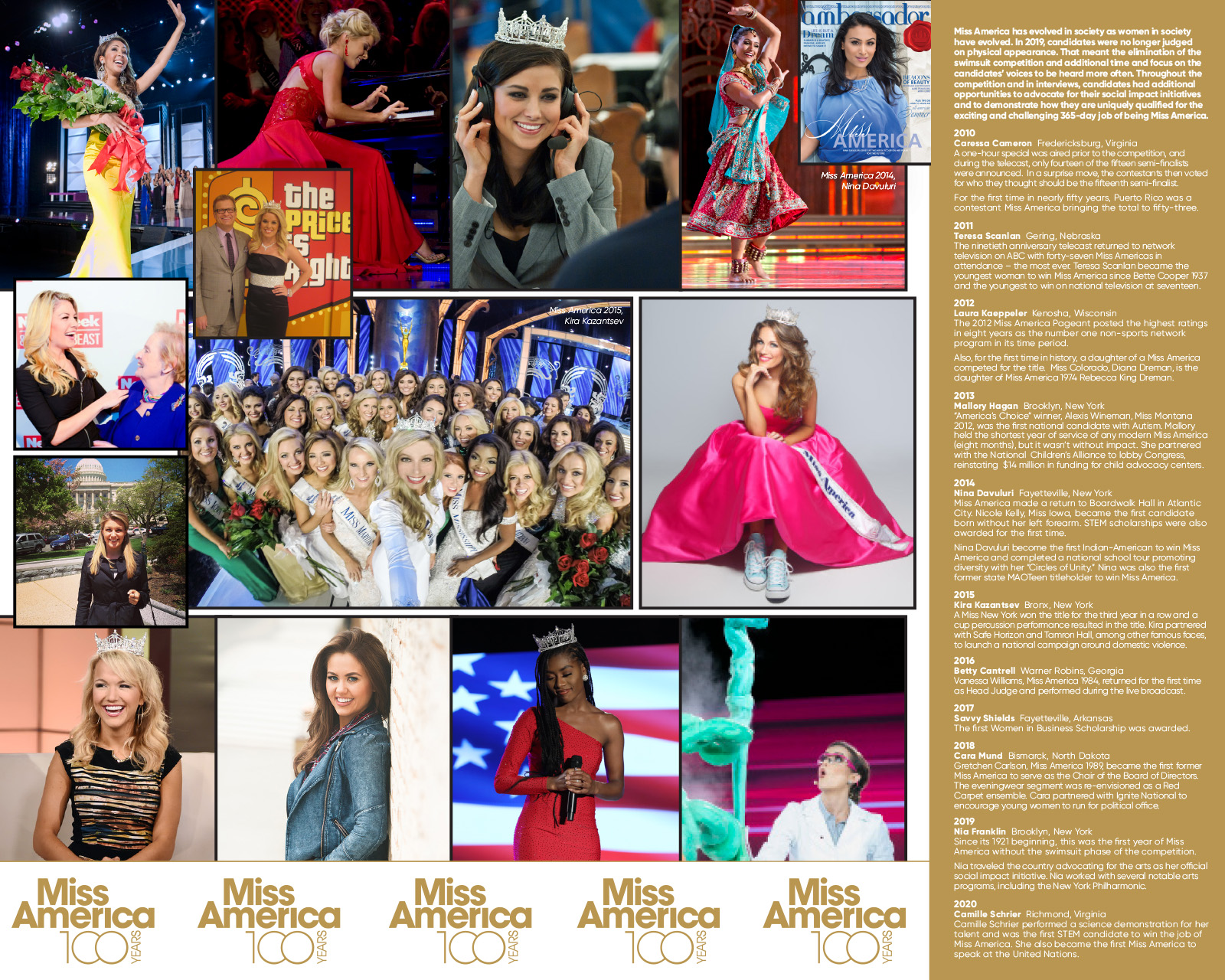
1920s
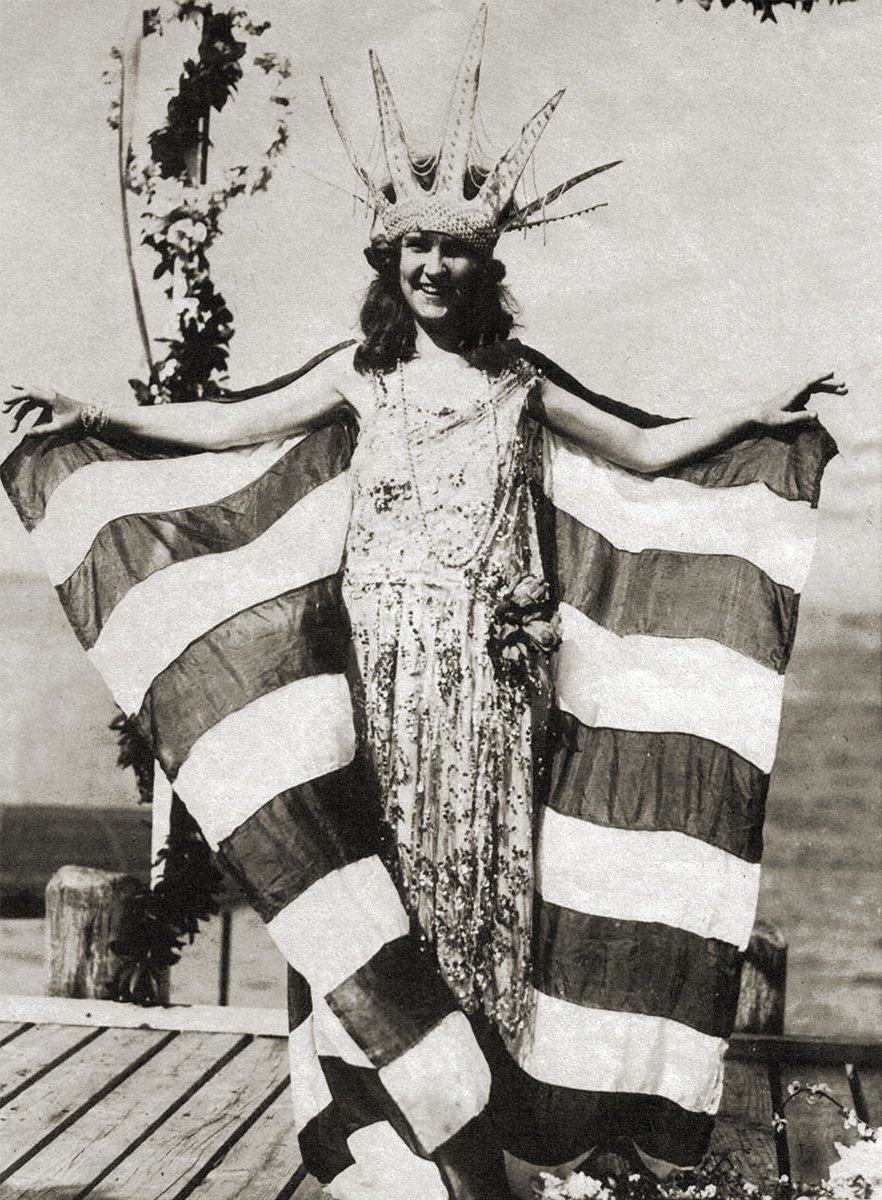
In the decades just prior to the pageant’s creation, there was a marked transformation around women’s roles in society with expanding social, political and cultural activity for women. A new image for women developed, symbolizing the changing times. The modern woman was vigorous. She exercised and was encouraged to eat right. This was an unprecedented break from the rigorously controlled physicality prescribed for the ideal 19th century woman, with its emphasis on delicacy and fragility.
1930s
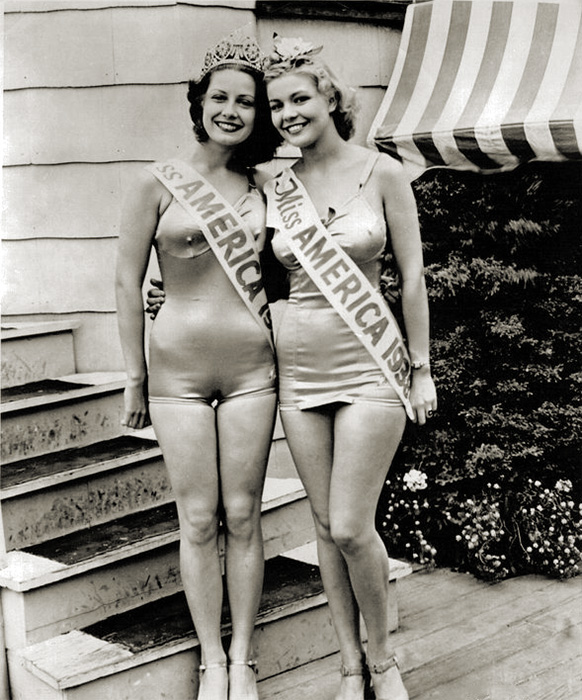
In 1933, the country was in the throes of the Great Depression. Some prominent Atlantic City businessmen finally decided to revive the pageant after being convinced they were missing out on valuable revenue by Armand T. Nichols, who directed the pageant from 1924–1927. The outdoor parades and other big attractions were left out due to the high cost that Depression Era businesses could not afford. Due to the lack of adequate publicity, the 1933 event was a financial disaster. The pageant was not revived in Atlantic City on secure financial footing until 1935.
Innovations to raise the pageant’s public image included the talent segment, which was added to the competition in 1935, and the formation of the vast Hostess Committee. The committee was made up of prominent Atlantic City women.
Images of the beautiful women of the pageant began to permeate the culture through newsreels, newspaper coverage and journals. As the country moved toward the 1940s, Miss America was becoming a national figure.
1940s
During World War II, the pageant once again faced discontinuation, this time because of war. Pageant officials had to think quickly and adapt to the changing world around them.
Faced with the crisis of wartime, Miss America was transformed into an emblem of patriotism and national pride. The image of Miss America was connected to the war effort as the winners of those years sold more war bonds than any other public figures. Thus began the tradition of Miss America as a morale booster for American troops. In those years, the image of Miss America, with her small-town persona, youth and energy, was becoming enshrined in the nation’s imagination as America’s ideal woman.
Also during the 1940s, the Miss America Organization created the single most important innovation of its time—a scholarship program. 1945 was a year in which only 76,000 women graduated from college. Lenora S. Slaughter, Pageant Director from 1941–1967, continued innovations by adding more scholarships. When most of the country was concerned about returning GIs and not about women getting a college education, the Miss America Organization appealed to American women as an organization that believed in women. Sponsoring scholarships changed the pageant dramatically, which, with time, helped the organization become the country’s leading provider of educational scholarships for women.
1950s
1950 marked the start of post dating the title. In September 1950, Miss Alabama, Yolande Betbeze, was crowned “Miss America 1951.” Post dating the title continued until September 2004, when Deidre Downs was crowned Miss America 2005. Jennifer Berry, Miss America 2006, was crowned in January of that year.
With television taking the country by storm, the advent of a pageant telecast caught the imagination of the American public. For the first time, the Miss America Pageant came into people’s homes. The annual program provided a kind of entertainment never before experienced nationally. It seemed that the women onstage embodied the dreams of every young girl.
The first broadcast in 1954 joined the program in progress at 10:30 PM and broke viewing records from coast to coast. Twenty-seven million Americans watched the crowning of their new Miss America. Television had discovered a new entertainment form and Miss America took her place alongside other media images that seemed to define America to the world. It has been one of the most highly rated television entertainment programs featuring women every year since then.
By the end of the 1950s, Miss America had become an international symbol of the ideal young woman. For many, their earliest memories of television are of Bert Parks, surrounded by intelligent, talented and beautiful young women vying for the crown.
1960s
The 1960s were once again a time of redefinition for the Miss America Organization, as well as for American society. Despite that, television ratings continued to soar and in 1966 the first color broadcast hit the airways.
But soon, the country’s attention began to focus on our involvement in the Vietnam War. As a result, American society experienced a major political upheaval. It became apparent that there was a need for Miss America’s role to expand even more. Although the pageant was heavily criticized for the 1967 launch of the “Miss America USO Troupes” into Vietnam and around the world, the Miss America Organization, to this day, maintains its support of the US Armed Forces.
By 1968, feminists stormed the boardwalk in Atlantic City in their crusade for equal rights. They used Miss America as a symbol for their fight, which encouraged even more change for the Miss America Organization.
1970s
The 50th Anniversary in 1970 saw a rise in television ratings, but people were still questioning the relevance of Miss America. By 1974, a law student crowned a doctorate student. The groundwork for the modern Miss America—a sophisticated, eloquent, well-educated public figure—was sealed. Not only were contestants becoming more interested in gaining a good education, they also saw Miss America as a means to success. As the momentum of the women’s movement grew, the women of Miss America were increasingly turning their attention to professional goals.
1980s
In the 1980s, Miss America maintained its prominence and popularity in a world that was quickly finding the competition less relevant. The decade witnessed the crowning of the first African-American woman, Vanessa Williams, and later that year also witnessed her resignation. This decade became a turning point in the evolution of the pageant’s history.
1990s
For The Miss America Organization, the 1990s marked a new era. Young women increasingly began to see the Miss America program as an opportunity to pursue higher education, professional opportunities and social causes. Winners of the title started becoming internationally recognized spokeswomen on issues ranging from literacy to AIDS awareness. Each Miss America was now required to have a platform issue which they brought public awareness to on a national speaking tour.
The platform issue once again helped change the image and mission of Miss America. She was being seen as a dynamic, articulate speaker and the champion of a cause; but was still approachable and real. The women who entered the program began to reflect a new standard of professionalism, fitness and intelligence. As winners of the title, they were sought-after speakers and advocates. Their appearances ranged from addressing Congress to visiting local schools.
2000s
to present
The new millennium brought many exciting challenges and fresh changes to the Miss America brand. The scholarship outreach continued to grow, and more and more individuals began to recognize the importance of the countless community service hours the contestants offered their communities. The departure of network television’s control enabled the competition to reassess itself, and gain strength to chart its own course and on its own terms. In conjunction with CMT and, ultimately, TLC, the Miss America brand was fortunate to align itself with new network partners who understood the intrinsic value of this institution while making it more relatable to young women across America.

